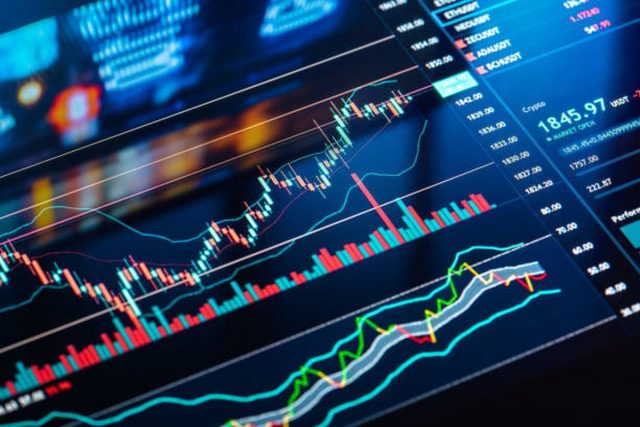Automated trading is becoming increasingly popular due to its immense potential. Read how to start using forex auto trade systems, pros and cons & more
Automated trading, also known as algorithmic trading, is the process of using software to trade the foreign exchange market automatically on your behalf. Automated trading systems use computer algorithms to analyze and trade the forex market automatically.
It allows traders to set parameters for their trades like when to open and close positions, how much money to invest in each trade, and how much risk to take. This means that once you have set up your software and it is connected to your brokerage account, you can leave it to trade for you while you pursue other interests.
Automated trading systems are becoming increasingly popular due to the potential they offer for greater returns with fewer efforts than manual forex trading but there are also some disadvantages of using forex auto trade software. In this article, we will discuss the pros and cons of automated forex trading so that you can decide if it is right for you.
Pros of Automated Trading System
1. Speed and Efficiency: Markets move pretty quickly and traders can fail to keep pace with it. However, as automated systems can respond instantly to changing market conditions, it can place trades much faster than a human trader could. They can also process a much larger number of trades in a given time period. This means that they can take advantage of opportunities in the market that a human trader might miss.
2. No Trading Emotions: Another advantage of auto trading is that it takes the emotion out of the equation. Since automated systems can be programmed to follow a specific set of rules, they will execute trades without the influence of emotions or other human biases.
Therefore, you will not be making decisions based on your emotions, but instead on logical market analysis. This can help you to avoid making costly mistakes that are often made when traders are feeling emotional.
3. 24/7 Trading: One of the biggest benefits of using an automated trading system is that it can help you to make money even when you are not actively working. This is because the software will place trades for you based on market conditions and your own trading strategy. This means that you can still profit even if you are on holiday or working another job.
4. Backtesting: Automated systems allow traders to test their strategies on historical price data to see how they would have performed in the past. This can help traders to identify potential weaknesses in their strategies and make adjustments as needed.
5. Risk Management: Automated systems can be programmed to include risk management rules, such as stop-loss and take-profit orders, to help limit potential losses.
Cons of Automated Trading Systems
1. Lack of Flexibility: Automated systems are based on a set of predetermined rules and algorithms, which can limit their ability to adapt to changing market conditions. This can cause them to make poor trades or even to become non-functional in certain market environments.
2. Dependence on Data Quality: Automated systems rely on historical data to make decisions, but the accuracy and quality of that data can be questionable. Data errors, such as incorrect prices or missing information, can cause an automated system to make poor trades. It is important to make sure that you choose a reliable software provider who has a good reputation for providing accurate information.
3. Lack of Understanding: Sometimes an automated trader may not fully understand how the automated system he/she is using works, which can lead to poor decisions and a lack of control over the trades that are being executed.
4. Overfitting: Overfitting can be an issue if the system is trained on a limited sample of data, and then fails to generalize to new data.
5. Vulnerability: Automated systems are vulnerable to power outages or other technical issues that can cause the system to crash or malfunction, leading to significant financial losses.
It is important to remember that no software can predict the future and there will always be an element of risk involved in any type of trading. If you are interested in getting started with automated forex trading, then there are a few things that you need to do. Firstly, you need to find a reputable software provider that offers forex automation.
The best-automated trading platform will allow you to test out the software to see if it is right for you. Secondly, you need to create a demo account with a broker so that you can practice placing trades without risking any real money. Finally, once you have perfected your trading strategy, you can start investing in a live account to enjoy auto trading services.
Which is Better? Manual or Automated Forex Trading?
There is no definitive answer to whether manual trading or auto trading is better for forex trading, as it depends on the individual trader’s needs and preferences. Both manual and automated trading have their own set of benefits and drawbacks, and which one is better for a given trader will depend on a variety of factors.
Manual trading allows for more flexibility, as traders can make decisions based on their own judgment and analysis of the market. They can also take into account a wider range of information, including fundamental and technical analysis, and can adapt their strategies as market conditions change.
On the other hand, automated trading systems can execute trades much faster than manual trading. This can be especially advantageous in fast-moving markets, where opportunities can arise and disappear quickly.
Automated systems can also be a great opportunity for those forex auto traders who can’t spend 24/7 analyzing the markets in order to identify potential opportunities. There are also auto copy trading systems that allow traders to replicate the strategies without the requirement of additional input.
These automated trade platforms can make trading easier for aspiring traders. Moreover, seasoned traders can also benefit by using the best auto trading platform as they can diversify their portfolio by putting in minimum effort.
Ultimately, whether manual or automated trading is better for a given trader will depend on their individual needs and preferences. Some traders may prefer the flexibility and control that manual trading provides, while others may prefer the speed and efficiency of automated trading.
Some traders may choose to use both manual and automated trading strategies, depending on the market conditions and their own goals.
It’s important to remember that success in trading is not determined by whether you’re using manual or automated strategies, but rather by the robustness and performance of your overall trading plan and execution.
A successful trader needs to have a deep understanding of the market, a robust trading strategy, solid risk management, and a good psychological attitude. How to Get Started With Automated Forex Trading Getting started with an automated forex trading system can seem daunting, but it’s actually a fairly straightforward process.
Here are the basic steps to getting started:
1. Develop a Trading Strategy: Before you can start using an automated trading system, you need to have a clear and well-defined trading strategy in place. This should include entry and exit rules, risk management rules, and any other rules that you want the system to follow.
2. Choose a Platform: Once you have a trading strategy in place, you need to choose a platform to implement it. There are many different platforms available. They offer a wide range of tools and resources that you can use to create and test your automated trading system. Some of them offer free demo accounts to practice with.
3. Backtesting: Once you have your automated trading system in place, you’ll need to backtest it to see how it would have performed in the past using historical market data. This will allow you to identify any potential weaknesses in your strategy and make adjustments as needed.
4. Forward Testing: After rigorous backtesting and fine-tuning, it’s time to test the system in a live market environment. It’s advisable to use a small account or risk a small percentage of your trading capital in this phase. This will give you an idea of how the system will perform in real-world conditions and allow you to make any final adjustments before using it to trade with real money.
5. Monitor and Re-evaluate: The last step is to monitor the performance of the system and make adjustments as needed. Regularly re-evaluate the system’s performance and make sure that it’s still aligned with your overall trading strategy and goals.
It’s worth noting that having a good trading strategy is the foundation of any successful automated trading system. It’s important to take the time to develop a solid strategy and to test it thoroughly before implementing it in a live trading environment. Additionally, it’s important to be aware of the risks involved with automated trading and to have proper risk management in place.







